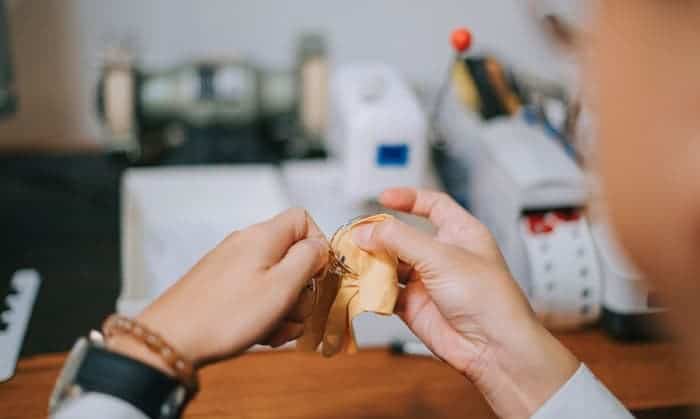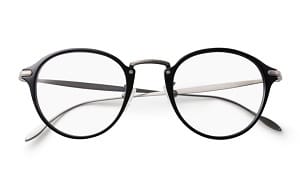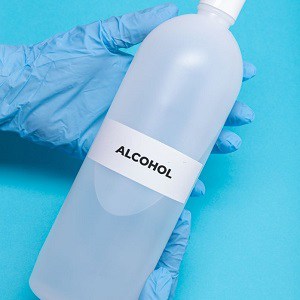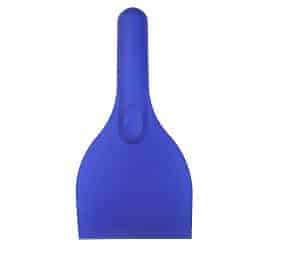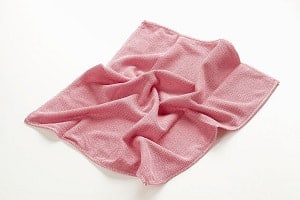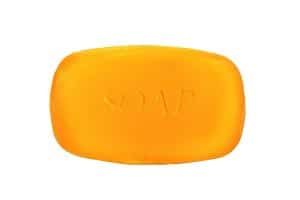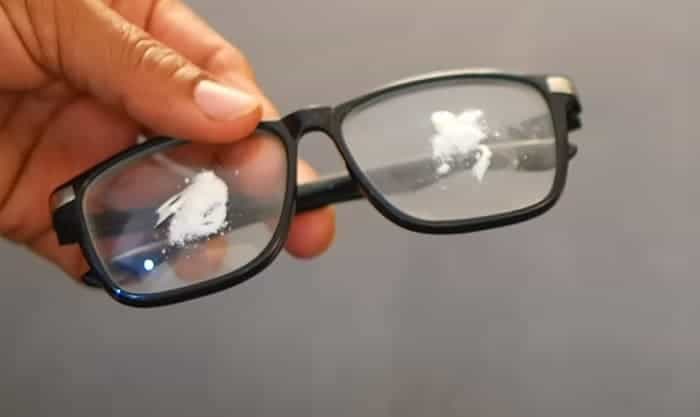If you are an everyday glasses wearer like me, you may notice tiny scratches appearing on the lenses after a long time of use. These scratches can cause vision problems, such as blurry or blocked vision. In some situations, they might even give you an eye strain or a headache.
Nowadays, most prescription glasses are covered all over with a thin layer of anti-scratch coating, anti-reflective coating, or even anti-UV coating. The coating is on the front and back surfaces of the lenses, which helps improve optical properties while protecting your lenses from being easily scratched and your eyes from UV lights.
However, because of how thin they are, in the long term, these coatings can get scratches no matter how well you take care of them.
Lucky for us glasses wearers, replacing the lenses is not the only option; we can get rid of the scratches at home. In the following part of this article, I will show you how to remove anti-scratch coating from glasses without causing any damage to them.
In short, you will be using rubbing alcohol or etching cream to peel off the coating on your glasses. For more details, however, continue to read.
Table of Contents
What You Will Need
Your glasses
Scratches on the lenses can cause vision problems, such as blurry or blocked vision. In some situations, they might even give you an eye strain or a headache. However, rest assured that these scratches on your lenses are not permanent. They will be gone once the coating on the glasses comes off.
However, please be aware that once the coatings are removed, their influences on your glasses are gone too. For example, if your glasses have an anti-UV coating, after following these steps and successfully removing the scratches, your eyes are no longer protected from UV rays by your glasses.
Grab your pair of glasses that you need to work with, and see whether the lenses are made of plastic or glass materials because we will be using different methods for each type. The safest way to get this information is to ask an optometrist or the place where you bought the glasses. So, go ahead, make a phone call, send an email or a message to get the exact information you need.
Rubbing alcohol or etching cream
- Plastic lenses
You will need etching cream. Sometimes, you might hear etching cream being called acid cream. The cream is a mixture of chemicals that can slightly etch the surface of the glass so we can remove the coating. You can easily buy a bottle on Amazon or your local Walmart.
- Glass lenses
Rubbing alcohol is available in almost every drugstore. In this case, you will need rubbing alcohol with a 99% concentration of isopropyl alcohol. Check the bottle carefully before buying it. Keep in mind that you will be removing a coating from glasses. Therefore, a high concentration of isopropyl alcohol is needed.
Plastic scraper
Skip this step if you own plastic lenses. Otherwise, prepare a plastic scraper.
Scrapers that are out of plastic are more flexible than metal scrapers. They are for stripping thin layers without the risk of damaging the underneath surface. It is a popular household tool, so you might already have one at home.
Microfiber cloth
Prepare a few pieces of microfiber cloth. These are soft enough to clean the lenses very effectively while not causing scratches. If you don’t have a microfiber cloth, cotton balls are excellent replacements.
Also, grab some Q-tips as we will need them to clean the frames later on.
Mild soap
Avoid highly fragranced and antibacterial soaps, instead, choose a bottle or bar of soap that is considered mild and can be for sensitive skin.
Warm water
Last but not least, keep a large bowl or cup of clean warm water nearby. Warm tap water should be fine, but make sure the water and container are clean, which means no sediment or residue in it.
Steps on How to Remove Anti-Scratch Coating From Glasses
Step 1: Work with the lenses
- Plastic lenses
Use a Q-tip or cotton ball to gently apply a generous amount of etching cream onto the lenses. Remember to apply the cream to the whole surface of the lenses, including the front and the back, using wiping motions.
If etching cream accidentally gets into the frames, grab a Q-tip and immediately clean them up. Etching cream can remove the paint on your frames.
- Glass lenses
If your lenses are glass, it’s time to pull out your bottle of rubbing alcohol. Put your glasses on a plate or large bowl and pour rubbing alcohol into the container until the liquid entirely covers the lenses. It will help soften the coating so that we can scrape it off.
Step 2: Wait
This step might sound boring, but it is necessary. Both etching cream and rubbing alcohol take time to soften the coating. But the timing is different.
Plastic lenses: Wait for 5-10 minutes
Glass lenses: Wait for at least an hour
Step 3: Remove the coating
Now that you have waited long enough, let’s remove the coating from the glasses!
- Plastic lenses
Use a piece of microfiber cloth and carefully wipe off the etching cream. Wipe multiple times, and don’t forget to switch to a new piece of microfiber each time to get the best result. Keep wiping until the lenses look clear.
- Glass lenses
With glass lenses, very cautiously scrape the coating off using the plastic scraper you’ve prepared. Do this as gently as you can; you don’t want to do any harm to the lenses.
Step 4: Wash and dry the glasses
Now that the coating is off, let’s give our glasses a thorough clean.
First of all, make sure your hands are clean. Then, mix a small amount of mild soap with warm water, and rinse the glasses with the mixture. I recommend rinsing it several times to ensure that the coating comes off entirely.
When you have completed it, you should rewash the glasses, this time only with clean warm water to clear the soap. Lastly, dry your glasses with a microfiber cloth.
Step 5: Try it on
Your glasses are scratch-free now. Go ahead, try it on, and see if your vision is improved.
Conclusion
Anti-reflective coating scratches can be removed using proper cleaning techniques and maintenance. Don’t let that cause you inconvenience or discomfort. Save this article and refer to it anytime you need it.
Please be aware that working on glasses’ lenses directly at home is not simple or easy; even the most careful person can be clumsy once in a while. So, if necessary, ask for help from the professionals.
I hope you found this article on how to remove anti-scratch coating from glasses helpful. If you do, don’t hesitate to share it. Also, don’t forget to share your thoughts in the comment section. I look forward to hearing from you!

Having worked in the field of personal protective equipment for over two decades, Andrew Carnegie is a specialist in the field.
At EDC, he strives to improve performance efficiency and promote workplace safety for EDC’s readers and customers. He also researches the most up-to-date equipment that has earned relevant accreditation for use in a wide range of industries and specialties.



